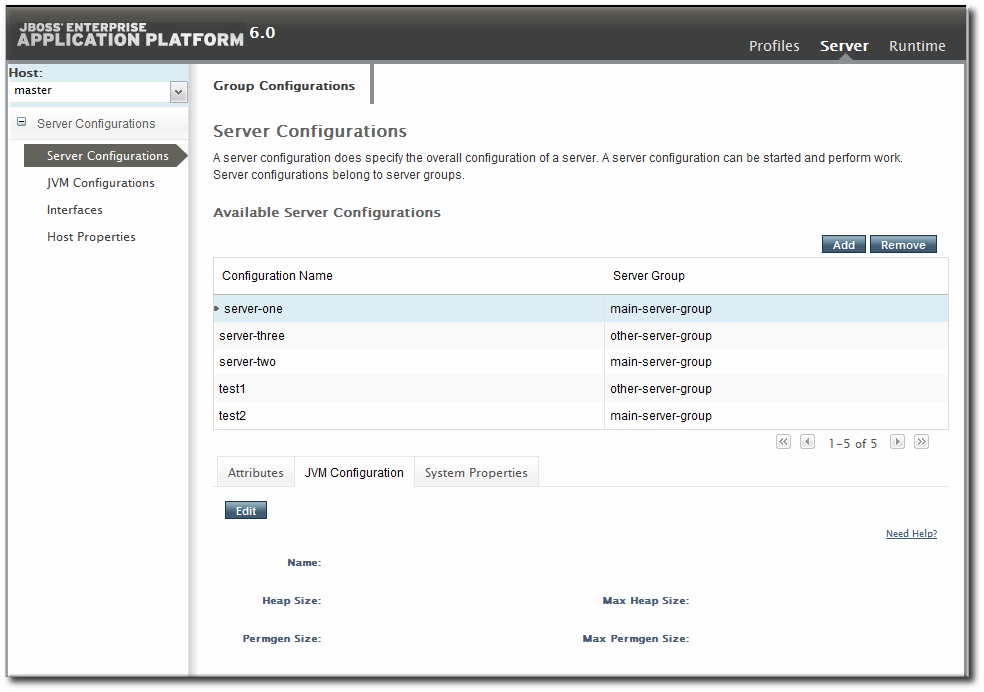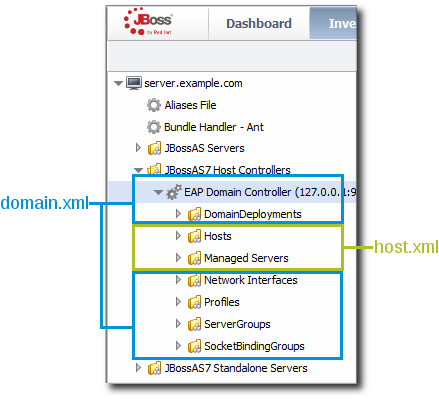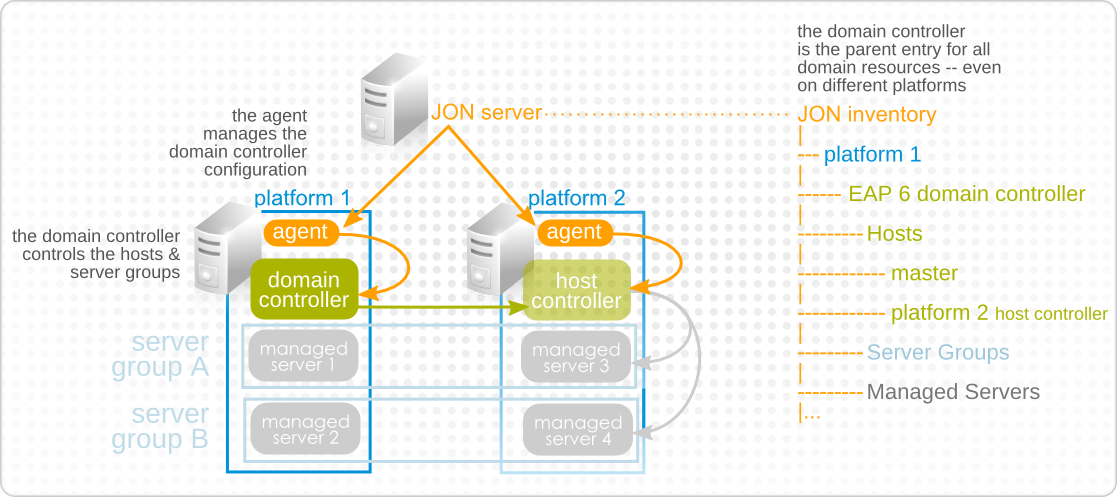-
Language:
English
-
Language:
English
Red Hat Training
A Red Hat training course is available for Red Hat JBoss Operations Network
4.2. Separating Configuration and Real-Time Operations: Domains
The structure of the domain is entirely different, in a way that embraces a more modular design.
A domain divides the application server into two conceptual halves: server configuration and runtime operations.
Configuration is centralized into the domain controller. The domain controller defines the profile and subsystem configurations, JVM settings, interfaces, and other settings in a single place.
The functions of the application server are carried out by managed servers, which can be installed on multiple machines. These managed servers do not define their own configuration (with a handful of exceptions); they accept the profile structures from the domain and serve the web applications deployed through the domain.
There is a secondary level of organization domains and managed servers called server groups. Server groups are defined as part of the domain configuration. They create environments for managed servers; they are configuration nodes, in a sense. A domain can have multiple profiles, JVM definitions, and web applications; it is a central repository of all possible configuration. Only specific configuration and content is assigned to a server group, and that specific configuration is what is applied to the managed servers.

Figure 4.2. Simple Domain Structure
The domain configuration is defined in the
domain.xml file. This lists all of the configured profiles and subsystems, server groups, socket binding configuration, system properties, deployments, and other settings. As with the standalone server, almost every entry is discovered and added to the inventory as a resource. For example, this creates a server group resource, with a child deployment resource and a child JVM resource for the server group.
Example 4.1. Server Group domain.xml Entry
<server-group name="main-server-group" profile="full">
<jvm name="default">
<heap size="1303m" max-size="1303m"/>
<permgen max-size="256m"/>
</jvm>
<socket-binding-group ref="full-sockets"/>
<deployments>
<deployment name="sample2.war" runtime-name="sample2.war"/>
</deployments>
</server-group>
The instances that carry out the operations are identified in the
host.xml file. These managed servers have virtually no configuration of their own; they simply point back to the original server group configuration to use in the domain.
<servers>
<server name="server-one" group="main-server-group"/>
<server name="server-two" group="other-server-group">
<!-- server-two avoids port conflicts by incrementing the ports in
the default socket-group declared in the server-group -->
<socket-bindings port-offset="150"/>
</server>
</servers>
The domain, through its profiles and its server groups, defines the overall configuration. The managed servers are workers under that configuration. This division between configuration and operation, particularly the emphasis on the functionality of the domain as a whole rather than any individual member, is reflected in the EAP 6 management console. The Profile and Servers areas manage domain configuration, while Runtime displays current statistics and deployed web applications. The focus is always on domain configuration and domain information.

Figure 4.3. EAP 6 Console
Managing domain resources in JBoss ON is less about managing the configuration than it is managing information. One of the strengths of the JBoss ON inventory structure is that is exposes the components of the domain very clearly and helps delineate the relationships between those resources.

Figure 4.4. Domain Resources
For example, the entry for a managed server lists all of the subsystems defined in its server group's profile, it lists its host controller definition, and it lists managed web applications deployed on it (through the server group). This consolidates all of the configuration information that is applied to that one worker instance, which makes the monitoring information on that managed server more valuable.
There is a shade of artificiality in the JBoss ON inventory in order to maintain the domain relationships. The domain is a single, overarching entity, but the components of the domain can span multiple platforms and resources on those platforms. The domain controller is considered the parent resource for all domain resources, regardless of their platform. This is hinted at in Figure 4.5, “Domain Components in the JBoss ON Inventory”. The domain controller is on Platform 1, so even though a host controller and two managed servers are on Platform 2, the host controller and managed resources are shown as children of the domain resource (on Platform 1).

Figure 4.5. Domain Components in the JBoss ON Inventory

